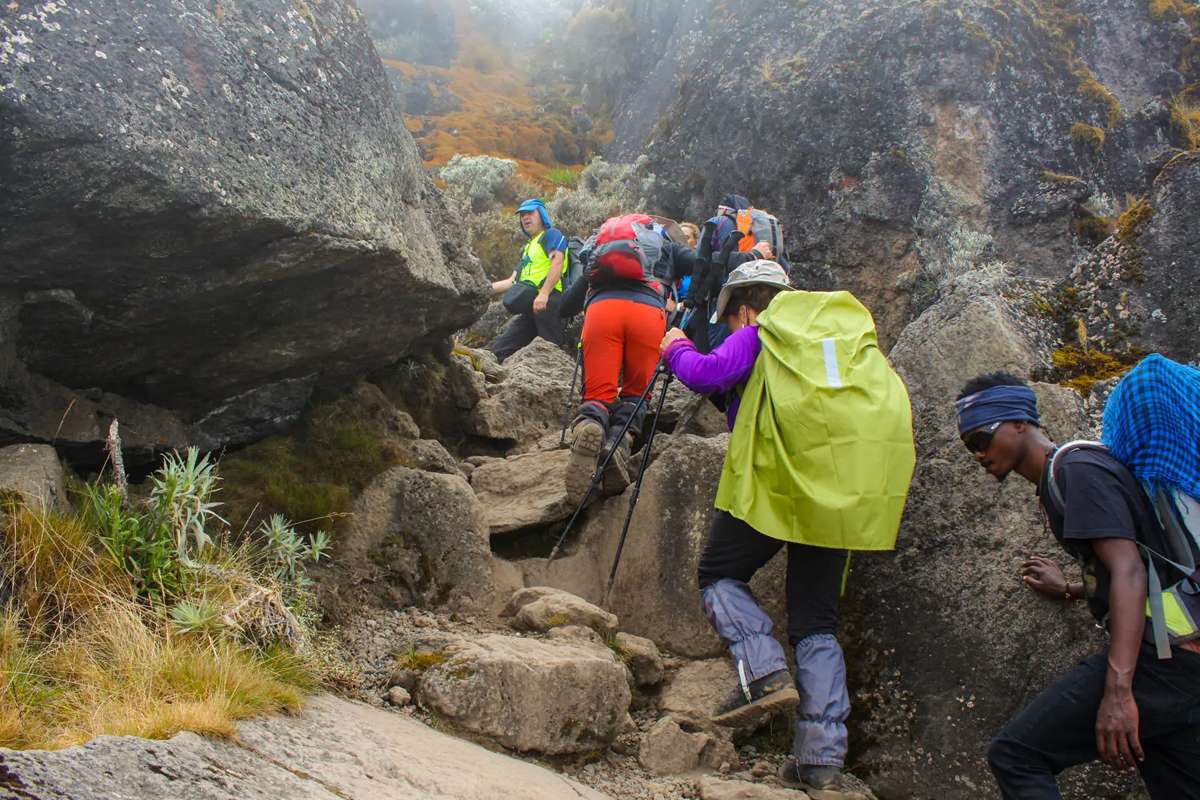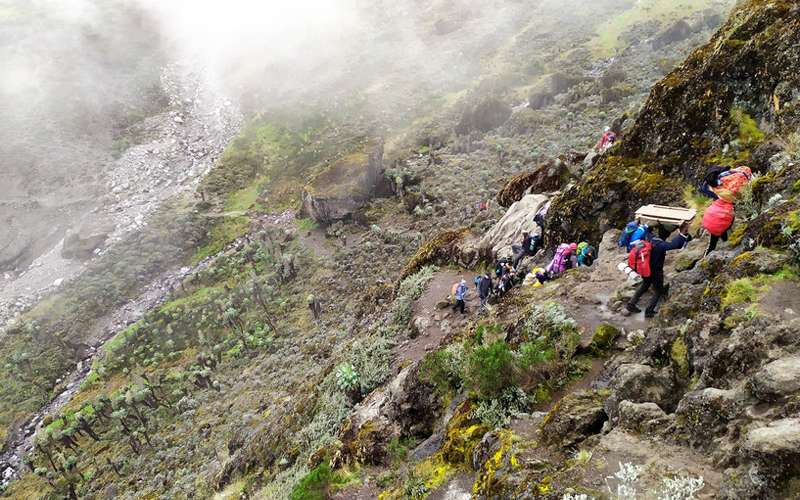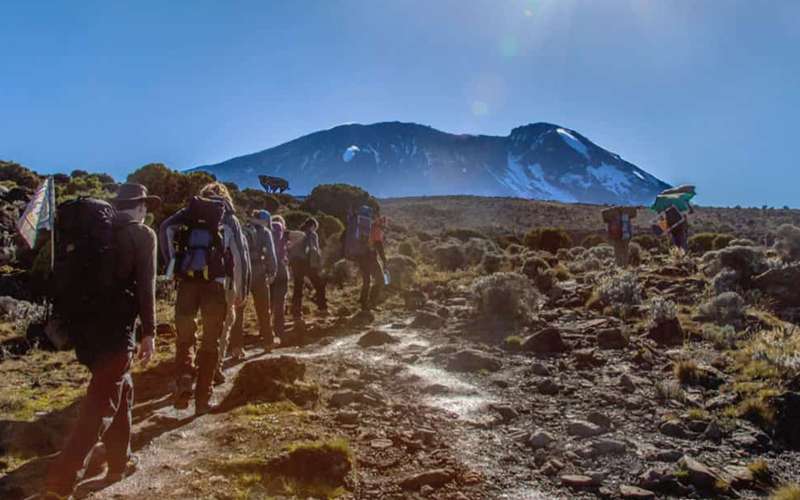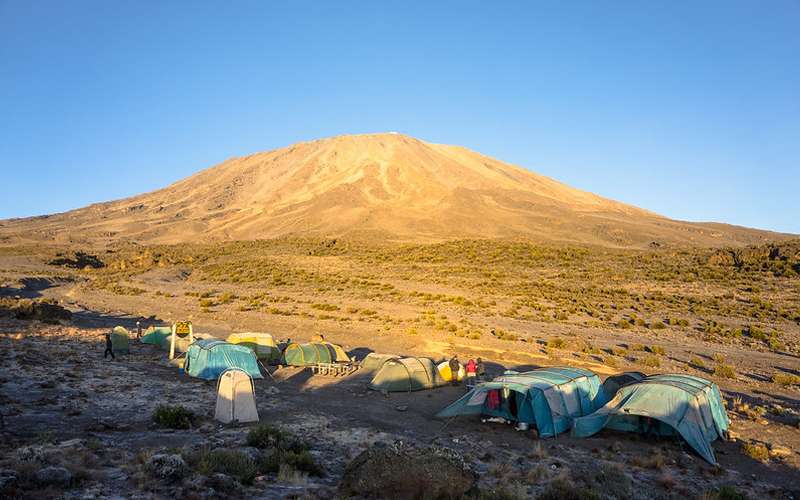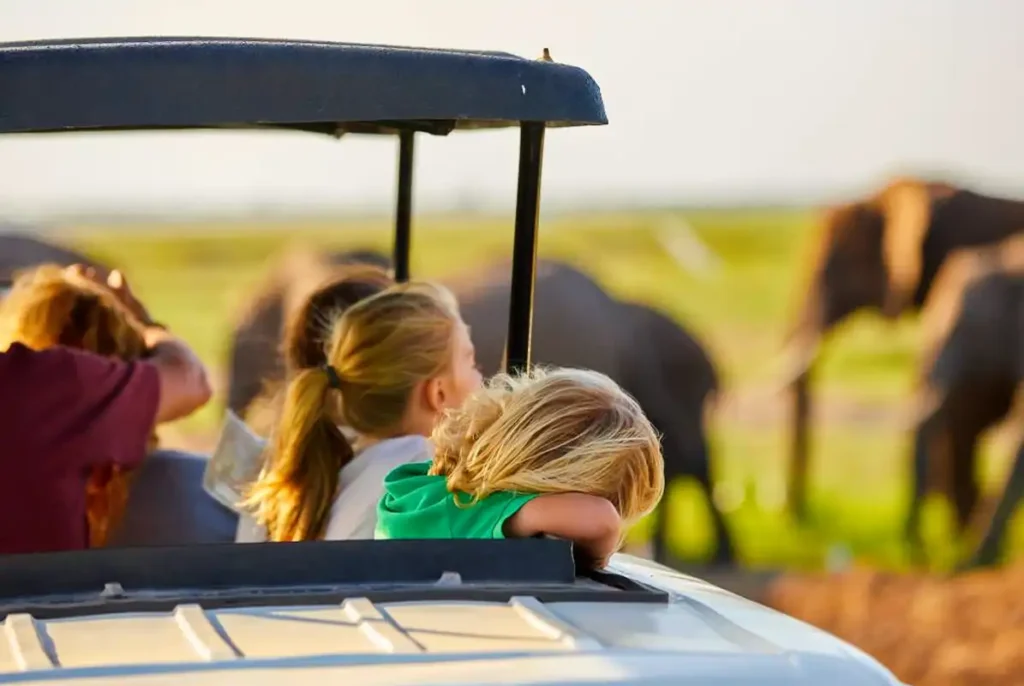Mount Kilimanjaro, Africa’s tallest peak at 5,895 meters (19,341 feet), attracts adventurers from around the globe. Among the various routes to the summit, the Umbwe Route is known for its steep ascent and challenging terrain, making it suitable for experienced trekkers seeking an exhilarating Kilimanjaro climb.
Why Choose the Umbwe Route?
- Unique Features: The Umbwe Route is renowned for its direct and steep path to the summit, offering one of the shortest routes but also the most demanding. This route provides a sense of adventure and accomplishment for those who conquer its challenges.
- Scenery and Challenges: The route begins in dense rainforest, transitioning to moorland and alpine desert. Climbers will experience dramatic changes in scenery, with the ultimate reward of reaching Uhuru Peak. The steep inclines and rugged terrain test the endurance and determination of trekkers.
Preparation for the Climb
- Physical Fitness and Training: Tackling the Umbwe Route requires a high level of physical fitness. A rigorous training regimen that includes cardiovascular workouts, strength training, and practice hikes with a loaded backpack is essential. Preparation will enhance your ability to handle the steep climbs and high altitudes.
- Necessary Gear and Equipment
Packing the right gear is crucial for a successful climb. Essential items include:
- Clothing: Layered clothing to adapt to varying temperatures, including thermal base layers, insulating mid-layers, and waterproof outer layers.
- Footwear: Sturdy, comfortable hiking boots and quality trekking socks.
- Accessories: Hats, gloves, sunglasses, and trekking poles.
- Backpack: A daypack for personal items and a larger pack for porters to carry.
Detailed Itinerary of the Umbwe Route
- Day-by-Day Breakdown
- Day 1: Umbwe Gate to Umbwe Cave Camp
- Elevation: 1,600m to 2,850m
- Terrain: Rainforest
- Distance: 11 km (6.8 miles)
- Day 2: Umbwe Cave Camp to Barranco Camp
- Elevation: 2,850m to 3,900m
- Terrain: Moorland
- Distance: 6 km (3.7 miles)
- Day 3: Barranco Camp to Karanga Camp
- Elevation: 3,900m to 4,035m
- Terrain: Alpine Desert
- Distance: 5 km (3.1 miles)
- Day 4: Karanga Camp to Barafu Camp
- Elevation: 4,035m to 4,640m
- Terrain: Alpine Desert
- Distance: 4 km (2.5 miles)
- Day 5: Barafu Camp to Uhuru Peak to Mweka Camp
- Elevation: 4,640m to 5,895m (summit) then down to 3,100m
- Terrain: Arctic Summit and Rainforest
- Distance: 17 km (10.6 miles)
- Day 6: Mweka Camp to Mweka Gate
- Elevation: 3,100m to 1,640m
- Terrain: Rainforest
- Distance: 10 km (6.2 miles)
- Key Highlights and Landmarks
- Umbwe Gate: Entry point where climbers register and begin their journey.
- Barranco Wall: A challenging yet rewarding scramble with spectacular views.
- Karanga Valley: Known for its scenic beauty and as a key acclimatization point.
- Uhuru Peak: The highest point in Africa, offering a sense of accomplishment and unparalleled views.
Acclimatization and Altitude Sickness
- Importance of Acclimatization: Due to its rapid ascent, the Umbwe Route poses a higher risk of altitude sickness. Adequate acclimatization is crucial to ensure a safe and successful climb. Extra acclimatization days can be added to the itinerary to improve success rates.
- Tips for Preventing Altitude Sickness
- Hydration: Drink plenty of fluids to stay hydrated.
- Pacing: Walk slowly and steadily, allowing your body to adjust.
- Diet: Eat light, high-energy meals to maintain your strength.
- Medication: Consult with a healthcare provider about taking altitude sickness medication like Diamox.
Guides and Porters
- Role of Guides and Porters: Guides and porters are essential to the success of your climb. Guides offer expertise, support, and motivation, while porters carry gear, set up camps, and ensure your comfort and safety.
- Tipping and Etiquette: Tipping is customary and a way to show appreciation for the hard work of guides and porters. Tips are usually given at the end of the trek, with amounts varying based on the length of the climb and group size.
Campsites Along the Umbwe Route
- Facilities and Amenities: Campsites along the Umbwe Route provide tents, communal dining areas, and basic sanitation facilities. Porters set up and dismantled camps, ensuring a smooth and comfortable trekking experience.
- Description of Each Campsite
- Umbwe Cave Camp: The first stop, located in the rainforest.
- Barranco Camp: Known for its views of the Barranco Wall and the Southern Icefields.
- Karanga Camp: A vital acclimatization stop before the final ascent.
- Barafu Camp: The last base camp before the summit push.
Wildlife and Flora on the Umbwe Route
- Unique Species and Vegetation: The Umbwe Route offers opportunities to observe diverse wildlife and flora. From the lush rainforest teeming with monkeys and exotic birds to the hardy alpine vegetation, the route showcases Kilimanjaro’s ecological diversity.
- Conservation Efforts: Efforts to conserve Kilimanjaro’s environment are ongoing. Climbers are encouraged to respect wildlife, stay on designated trails, and follow conservation guidelines to minimize their impact.
Cultural Experiences
- Interactions with Local Communities: Trekkers on the Umbwe Route may interact with the local Chagga people, learning about their culture and traditions. These interactions provide valuable insights into the region’s heritage and lifestyle.
- Cultural Significance of Kilimanjaro: Kilimanjaro holds deep cultural significance for local communities, is considered a sacred mountain, and is central to many local myths and traditions.
Safety and Challenges
- Common Challenges Climbers Face: Climbers may face challenges such as altitude sickness, extreme weather, and physical fatigue. Proper preparation and acclimatization are key to overcoming these challenges.
- Safety Precautions and Emergency Procedures: Guides are trained in first aid and emergency procedures. It’s important to follow their instructions, report any symptoms of illness promptly, and carry essential medications and emergency supplies.
Best Time to Trek
- Seasonal Weather Conditions: Kilimanjaro has two main trekking seasons: January to mid-March and June to October. These periods offer the best weather conditions for climbing, with clear skies and mild temperatures.
- Recommended Months for Climbing: The most recommended months for climbing the Umbwe Route are January, February, and September. These months offer favorable weather and fewer crowds, enhancing the trekking experience.
Sustainable Trekking Practices
- Leave No Trace Principles: Climbers should adhere to Leave No Trace principles to minimize their environmental impact. This includes packing out all trash, minimizing campfire impact, and respecting wildlife and local cultures.
- Supporting Local Economies: By hiring local guides and porters, purchasing local products, and staying in community-run accommodations, climbers can support the local economy and promote sustainable tourism.
The Umbwe Route offers an exhilarating and challenging trek for those seeking adventure on Mount Kilimanjaro. With its steep climbs, stunning landscapes, and rich cultural experiences, this route provides a unique and rewarding journey. Proper preparation, respect for the environment, and a determined spirit will help climbers reach the summit and create unforgettable memories.
FAQs
How long does it take to climb the Umbwe Route?
The Umbwe Route typically takes 6 to 7 days to complete, including time for acclimatization and summit attempts.
What is the success rate for climbers on the Umbwe Route?
The success rate for climbers on the Umbwe Route is approximately 70%, due to its challenging and direct ascent.
How difficult is the Umbwe Route compared to other routes?
The Umbwe Route is considered one of the most challenging routes due to its steep inclines and rapid ascent, suitable for experienced climbers with a good level of fitness.
What should I pack for the Umbwe Route trek?
Essential items include layered clothing, sturdy hiking boots, a good-quality sleeping bag, trekking poles, and sufficient water and snacks. A comprehensive packing list can help ensure you’re well-prepared.
Can beginners successfully climb Kilimanjaro via the Umbwe Route?
While the Umbwe Route is demanding, beginners with proper preparation, training, and guidance can successfully climb Kilimanjaro. Engaging experienced guides and following acclimatization protocols is crucial for success.
For a comprehensive safari experience in Tanzania, explore the following options on our page:
– Short Trip
– Terms and Conditions
– Family Safari
– Honeymoon Safari
– Walking Safari
Discover detailed information and guidelines to plan your safari adventure according to your preferences and requirements.


